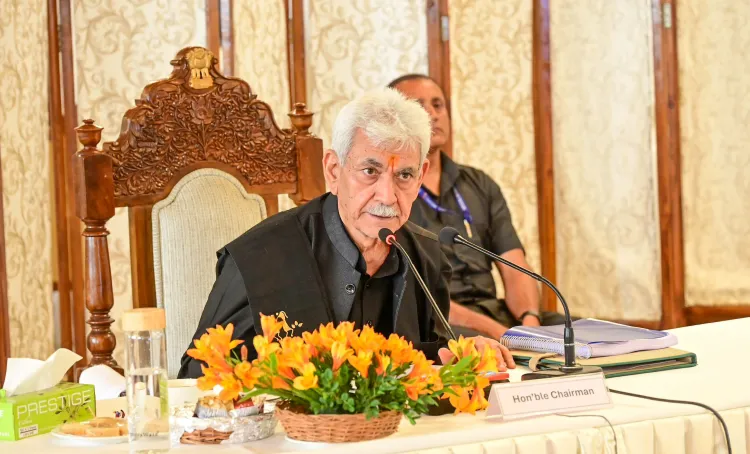What Did J&K L-G Discuss During His Visit to Sonamarg Ahead of Amarnath Yatra?

Synopsis
Key Takeaways
- J&K Lt Governor engages with local stakeholders.
- Amarnath Yatra set to commence on July 3.
- Commitment to address local concerns highlighted.
- Helicopter services available for pilgrims.
- Historical significance of the shrine emphasized.
Srinagar, June 11 (NationPress) The Lt Governor of J&K, Manoj Sinha, made a visit to Sonamarg in the Ganderbal district on Tuesday, engaging with members of the Sonamarg Market Association, hoteliers, pony wallahs, and other service providers in preparation for the Shri Amarnath Ji Yatra.
Officials reported that the delegations presented several key issues regarding the smooth execution of the upcoming annual Amarnath Yatra.
The Lt Governor assured the delegates that their concerns would be duly considered and addressed appropriately.
He reiterated the commitment of the Shri Amarnath Ji Shrine Board and the J&K Administration towards the well-being of all stakeholders involved in this sacred pilgrimage.
This year’s Amarnath Yatra is set to commence on July 3 and conclude on August 9, coinciding with the festivals of Raksha Bandhan and Shravan Purnima.
The Amarnath Cave shrine, located at an altitude of 3888 metres in the Kashmir Himalayas, features an ice stalagmite structure that changes with the lunar phases.
Devotees believe that this ice stalagmite symbolizes the mythical powers of Lord Shiva.
Pilgrims can reach the cave shrine via the traditional south Kashmir Pahalgam route, taking three days, or the shorter north Kashmir Baltal route.
Yatris can return to the Baltal base camp the same day after having ‘Darshan’ at the cave shrine.
Helicopter services are available for pilgrims on both routes, facilitating their journey.
Local pony wallahs, workers, and guides familiar with the mountainous terrain play a vital role in ensuring the successful completion of the Amarnath Yatra.
Historically, locals have assisted Yatris along the traditional Pahalgam route to reach the shrine.
Notably, the holy cave shrine was first discovered by a Muslim shepherd, as documented in historical records.
Before the establishment of the Shri Amarnathji Shrine Board, the shepherd’s descendants received a portion of the offerings made at the shrine.
After the shrine board's formation, the shepherd family was compensated with a one-time settlement as the shrine's affairs were fully managed by the board.









